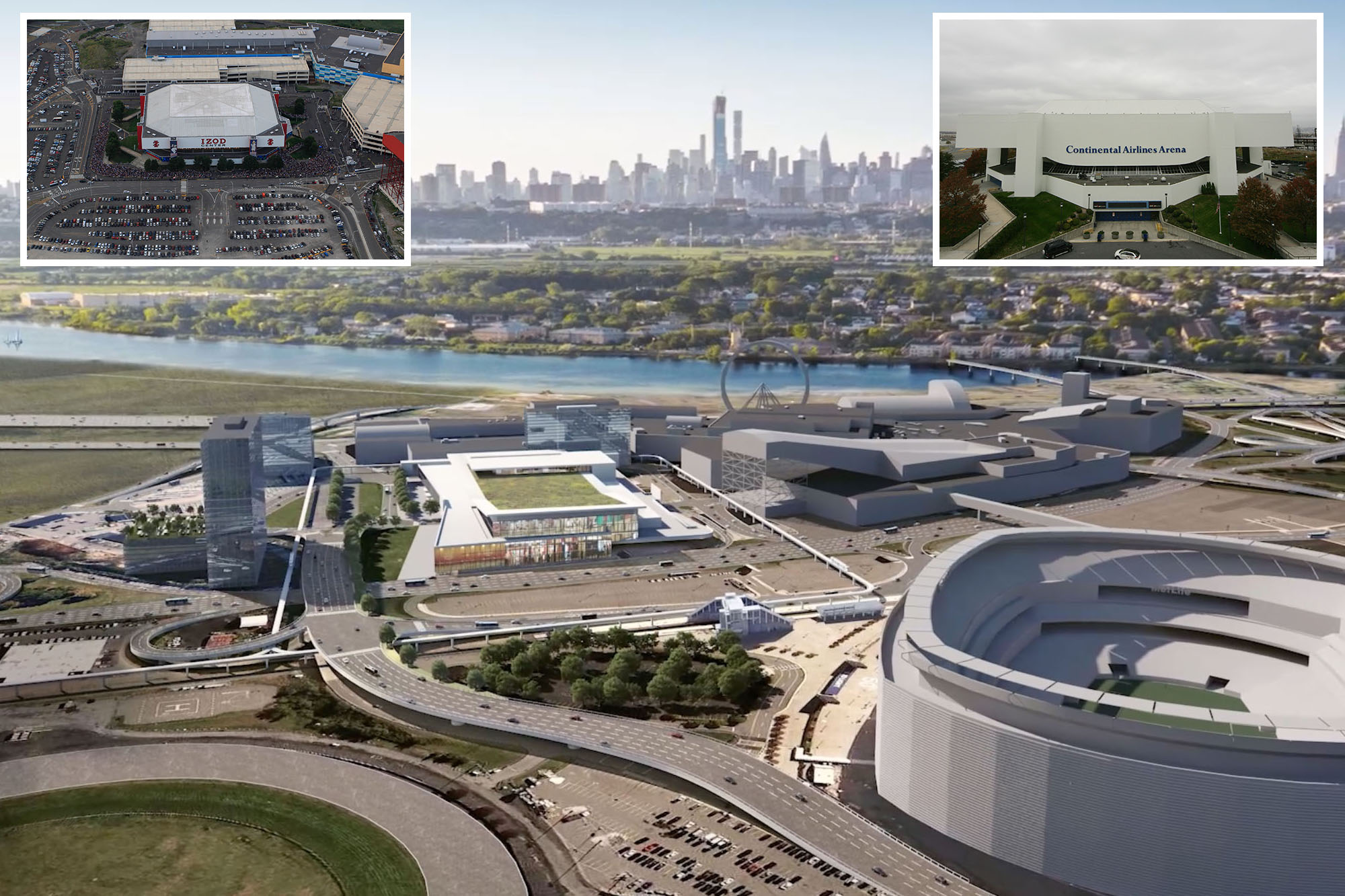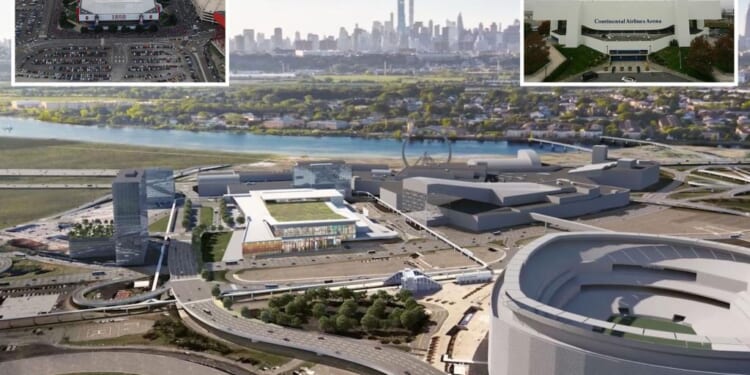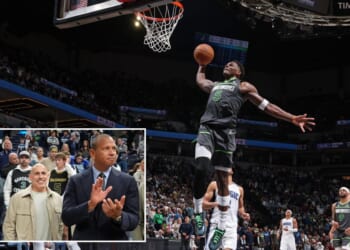
More than a decade after the Meadowlands Arena closed its doors to the public, the once-famous sports and concert venue sits nearly abandoned along the banks of the Hackensack River — even as new developments have sprung up all around.
First, it was MetLife Stadium, which replaced the aging Giants Stadium next door in 2010. Then it was American Dream, the neighboring megamall that opened in 2019.
But the arena — known in its glory days as the Brendan Byrne or Continental, as well as the IZOD Center — has remained frozen in time since the New Jersey Sports and Exposition Authority voted to shutter it in 2015.
That might finally be about to change.
Local business leaders — including the Meadowlands Chamber of Commerce — want to tear down the 20,000-seat venue and build a massive convention center with exhibition, meeting and banquet spaces.
It would be a boon for the Meadowlands, said chamber president and CEO Jim Kirkos — the new $1.6 billion center could be booked up for most of the year and could generate as much as $30 billion over three decades, according to an economic impact study commissioned by a chamber affiliate.
Those numbers get Kirkos excited.
“If we built the facility like we envisioned, it’s too much of an economic impact to walk away from,” he told The Post in a phone interview this week. “Because right now we have a donut hole, right? The arena is not producing anything.”
Originally built to host the New Jersey Devils and the New Jersey Nets, the arena opened July 2, 1981, in the most Jersey way possible: with a series of Bruce Springsteen shows.
“That was the best show ever,” the Boss said in his dressing room after the first performance, according to Rolling Stone. “We couldn’t hear each other onstage. I felt like the Beatles.”
The arena witnessed a string of glorious moments from there, including three Stanley Cup championships and numerous concerts that shook the foundation of the area, which sits on swampy grounds.
“It was a great place,” Matt Lucciano, a 62-year-old surveyor from East Hanover, said Thursday.
“Not the flashiest or fanciest, but it was never really about the venue so much as who was playing there,” he said, before lamenting its current state.
“Every time I drive past it, I have to look away because it’s sad to see a place that once hosted the biggest bands in the world just sitting there in that condition,” he said. “I have great memories there, but I’m not against seeing it demolished and something better put in its place — something that’s actually used.”
Kirkos called the convention center “quite frankly a no-brainer.”
Despite it’s appearance though, the arena — owned by the independent New Jersey Sports and Exposition Authority — isn’t totally dormant.
Officials have been leasing it out as an impromptu film studio for popular shows such as “The Walking Dead,” “The Enemy Within,” “The Equalizer,” a rep said in an emailed statement.
The building has also served as a rehearsal spot for musicians such as Drake, Dua Lipa, Roger Waters and Justin Timberlake, who use the big empty space to work out kinks in their shows before they head out on the road.
Some state agencies — such as the New Jersey State Police — also work out of the building, and it’s expected to be a staging ground for the 2026 World Cup, whose final game is in East Rutherford that July.
Those endeavors make the 44-year-old arena “revenue neutral” at the moment, officials said.
But Kirkos said that’s nothing compared to what a big convention center could bring in.
The proposed 460,000-square-foot center would include 300,000 square feet of open space that could be used for exhibitions or sporting events; 100,000 square feet of meeting space; and 60,000 square feet of banquet space that could host events of up to 2,500 people, the impact study said.
Kirkos said a Meadowlands Convention Center could host as many as 250 to 300 “event days,” which could be anything from conferences and trade shows to graduations and sporting events.
And it could fill something of a void in North Jersey — the metropolitan area is short about 2 to 3 million square feet of convention space based on its population.
The impact study also recommended building 4,500 hotel rooms — 1,000 of which would belong to an attached hotel.
Taken together, the plans could make the convention center an attractive destination — and bring in more than $3.5 billion in taxes, $30 billion in total new spending and create nearly 6,000 full-time jobs, supporters estimate.
Initially, business leaders wanted the center built by the final game of the World Cup, but that idea’s been scrapped, Kirkos said.
But he hopes they can move quickly once the event ends, knocking down the old arena and starting work on the new structure that could ideally be done as early as 2028, he said.
It’s still unclear whether the state will be interested enough to spend billions on the idea, however.
The plan does have some big-time backers — such as New Jersey State Senate Deputy Majority Leader Paul Sarlo and Gov. Phil Murphy, who said in 2023 that the concept is “very attractive,” according to ROI-NJ.
But no one knows if the term-limited governor’s successor will feel the same way when he or she takes office next January.
Neither Murphy nor Sarlo responded to requests for comment this week.
Still, Kirkos remains optimistic and is putting together the funding for a $4 million scoping assessment, which he said is the next step.
“It will be like a complete business plan, so the next governor can use it to make decisions — and have all the necessary details,” he said.
Despite the hoops and hurdles, Kirkos believes it will be worth it in the end.
“There’s not a project in New Jersey right now that has this kind of economic impact,” he said. “How do we not try to do this?”











